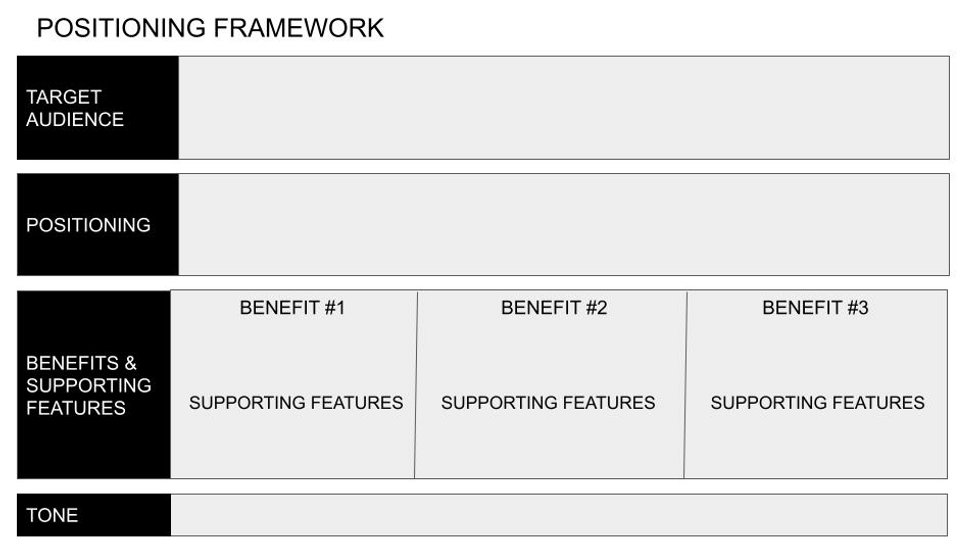
To get your customers to think of your brand first when they are ready to buy, the difference may come down to how you position your brand to them. Let's begin by outlining what brand positioning is, how to successfully position your brand, and provide you with a brand positioning example.
Brand Positioning - What Is It?

Brand positioning is the process of positioning your brand in the mind of your customers based on your brand purpose and values that gives you a competitive advantage.
What do you think of when you hear "search engine"? Did Google or Yahoo come to mind? These products are positioned to dominate the category. What about a company that provides "overnight shipping"? FedEx owns the transportation category even though other companies provide overnight shipping.
A well-developed and implemented brand position provides a sustainable competitive advantage, communicates value to customers, is a vehicle to help manage brand consistency, and impacts the bottom line.
How To Create A Killer Brand Positioning

lisaperry
Your brand positioning statement is a strategic document that will help define the direction of your innovation, marketing, commercialization, and sales strategies. Here are four steps to consider when creating your brand positioning.
- Evaluate Current Standing: Evaluate your current brand positioning. Is it working? Does it reach your target audience? Is it helping to achieve your business goals? If not, you may need to look at repositioning your brand.
- Research Your Competitors: You can't stand out from the crowd if you don't know what the crowd is doing. More importantly, you don't want to have the same brand position as your competitors. Conduct a competitive analysis to evaluate your competitor's brand position by looking at their social media feeds, company websites, marketing & advertising materials, and customer service. Look for what your competitor's mission, vision, and value statements are, who they're targeting, what their messaging is, their unique selling proposition, and their positioning strategies. For more information on how to gather competitive research, check out my article.
- Identify Your Target Audience: Understanding your target audience is critical as this information will define every strategy you execute. Your goal is to define your target audience into a simple statement: Our target market is (gender) aged (age range), who live in (place or type of place) and like to (activity). For more information on how to develop your target audience, check out my article.
- Identify Your Differentiators:Just like everyone is unique and different, so is your brand. It's your job to find those characteristics and differentiators that will make your brand stand out from the competitive crowd. List all the things that your competitors do well. List all of the things you do well. List what your customers want. Now start comparing your most unique angles against your audience's needs. Are there any needs that haven't been filled? Is there anything that you provide that your competitors can't easily copy or reproduce? Check out my article on how to develop your unique differentiators.
- Craft Brand Positioning Statement: Here is a template to follow when crafting your brand positioning statement.
Brand Positioning Example

While competitors may have similar products or services to you, positioning your brand will provide that unique difference in how customers perceive you.
Let's look at General Motors. They offer a variety of SUVs to fit customers' specific needs. Specifically Yukon and Chevy Tahoe SUVs. These two vehicles have the same engine but different upgrades.
The Yukon SUV has positioned itself as the only premium truck manufacturer, and it considers itself a premium-level brand across its lineup of trucks and SUVs. U.S. News has ranked GMC's Yukon as #2 in the large SUV category.
In contrast, the Chevy Tahoe has positioned itself as a multi-purpose family vehicle with the versatility to tow a trailer, go off-road, or take the family on a road trip. U.S. News has ranked the Chevrolet Tahoe #4 in the large SUV category.
To note, there were two #2 rankings by U.S. News (both by General Motors) so technically, the Chevy Tahoe came in at #3. Needless to say, their brand positioning seems to be working well.
The good news is that you don't have to stand out to everyone, you just have to stand out to the people you serve. Do you know the position you want to take in the market? Start building your brand leadership today. You've got this!
- Brand Strategy: What Is Brand Value? (With Examples) - Work It Daily ›
- 4 Steps To Developing Brand Values - Work It Daily ›
- The Importance Of Branding For Your Business - Work It Daily ›
- How To Shape Perceptions With A Brand Messaging Framework - Work It Daily ›
- The High Cost Of Not Knowing Your Target Audience - Work It Daily ›

 Bigstock
Bigstock Bigstock
Bigstock Bigstock
Bigstock


